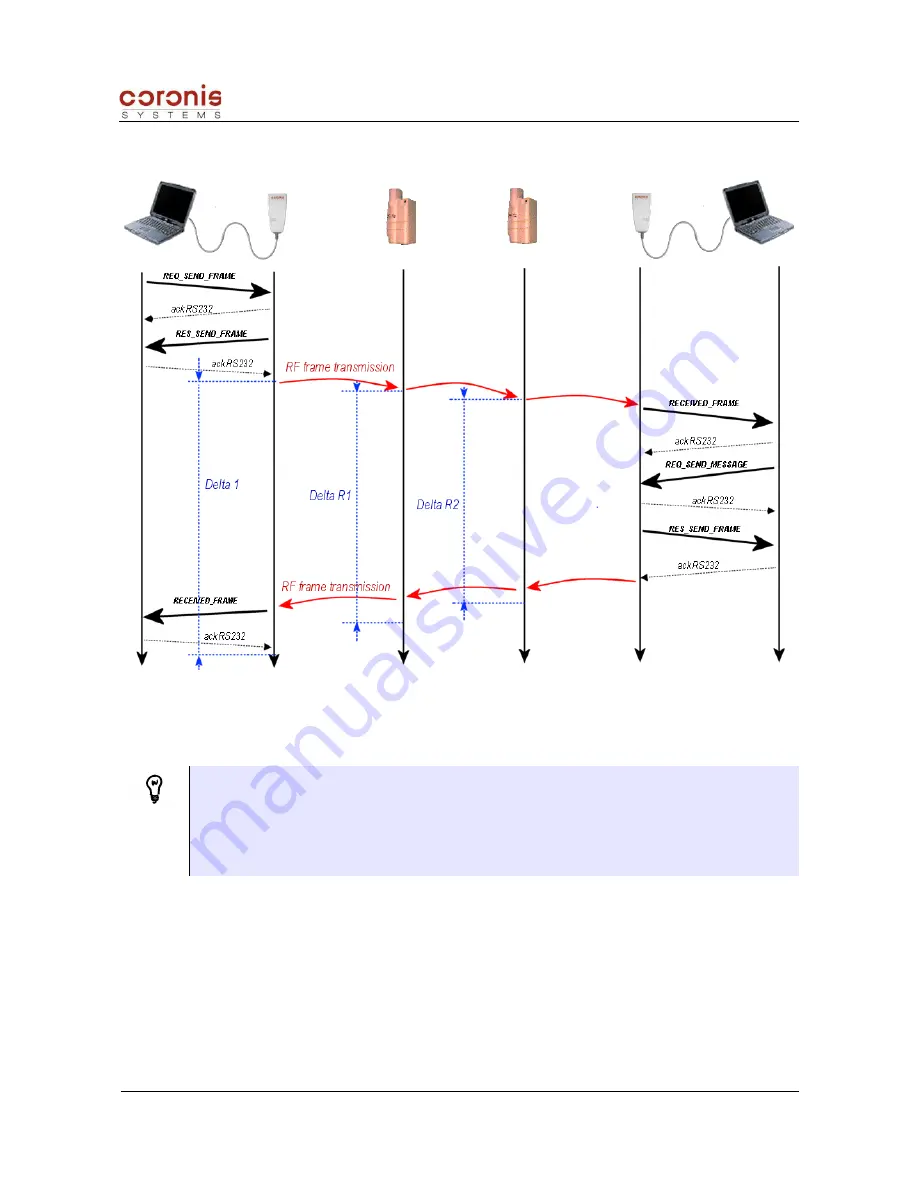
Document : CS-SUP-MUTI-WPORTAPP-E02.sxw
•
Diagram in Relaying mode
In the case of the Relaying mode, the time-out from the transmitter point of view is longer than in Point-to-
point mode, because of the transit via the relays.
Time-out RADIO_USER_TIMEOUT is always applied, but does not take into account the relays. This time
value will be applied by the last relay, before the recipient (R2 Delta = Radio_User_Timeout).
Remark : the value of the RADIO_USER_TIMEOUT applied by the last relay, is configured in the
transmitter; and not in the relay itself.
In fact, in 'relaying' mode, the relay use a value of RADIO_USER_TIMEOUT encapsulated in the
radio frame, by the transmitter.
The relay is not using its own parameter settingof RADIO_USER_TIMEOUT, only when it is
transmitting; not repeating.
In the diagram, value RADIO_USER_TIMEOUT configured in the transmitter, corresponds to time
Delta R2
applied by Relay 2.
Delta 1
, and
Delta R1
are the times evaluated by the corresponding radio equipment. This evaluation
depends of the number of relays, the type of WakeUp, its length, and value of parameters
RADIO_USER_TIMEOUT; and RADIO_ACKNOWLEDGE.
WaveCard user handbook
page 42 of 67
















































